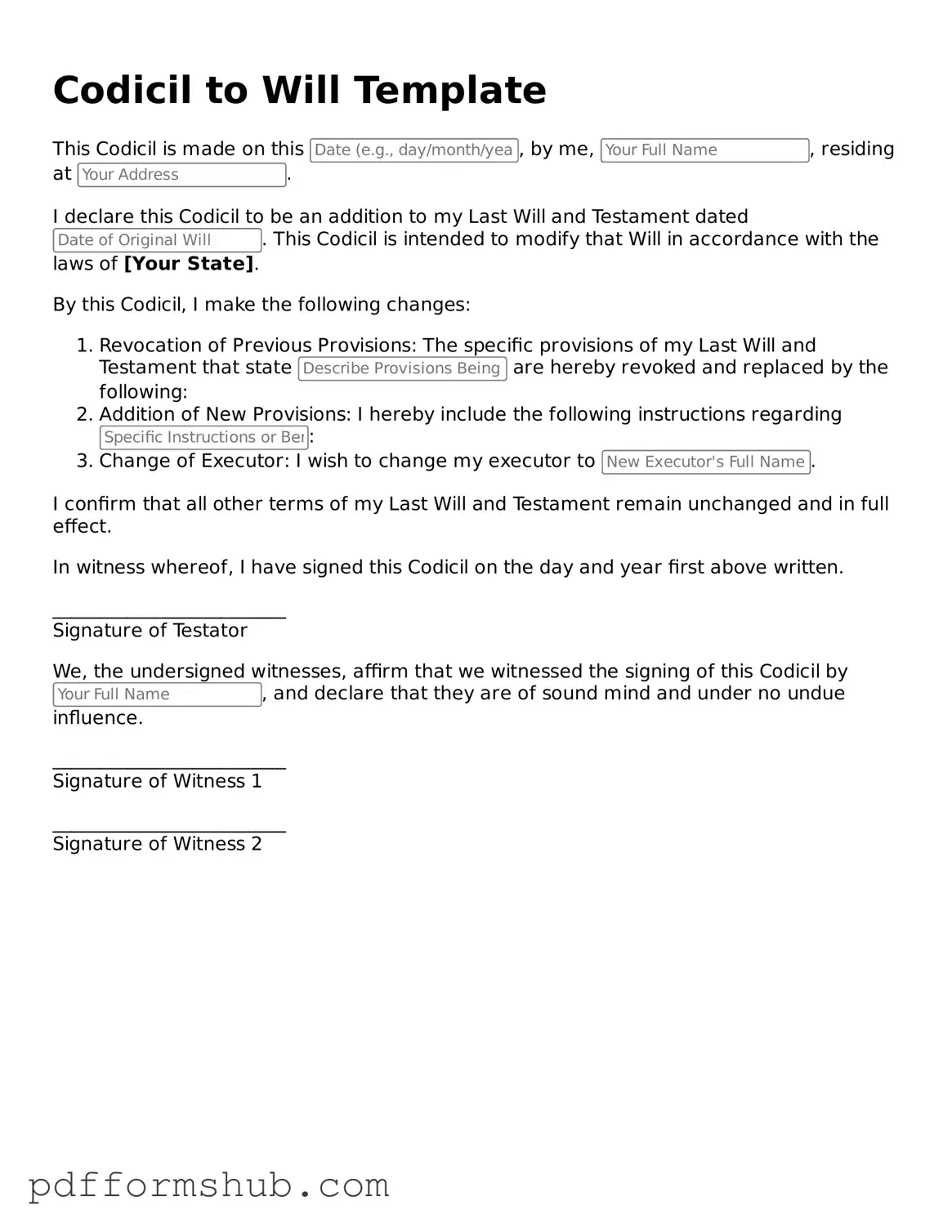When individuals create a will, they often seek to ensure that their final wishes are clearly articulated and legally binding. However, life circumstances can change, prompting the need for adjustments to those original plans. This is where a Codicil to Will form becomes essential. A codicil serves as a legal supplement to an existing will, allowing for modifications without the need to draft an entirely new document. It can address various changes, such as altering beneficiaries, adjusting asset distributions, or even revoking specific provisions of the original will. Importantly, a codicil must adhere to the same legal requirements as a will, including being signed and witnessed appropriately. This form provides a streamlined approach for individuals wishing to update their estate plans, ensuring that their intentions are accurately reflected and legally enforceable. Understanding how to properly utilize a codicil can save time, reduce confusion, and maintain clarity in the estate planning process.
